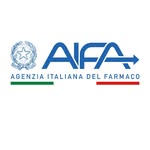.png) Agenzia Italiana del Farmaco
Agenzia Italiana del Farmaco
Direct Healthcare Professional Communication: Combined hormonal contraceptives - Direct Healthcare Professional Communication: Combined hormonal contraceptives
Direct Healthcare Professional Communication: Combined hormonal contraceptives
Combined hormonal contraceptives: be aware of the difference in risk of thromboembolism between products, the importance of individual risk factors and remain vigilant for signs and symptoms.
Summary
- This review confirmed previous understanding that the level of VTE risk with all low dose CHCs (ethinylestradiol <50µg) is small.
- There is good evidence that the risk of venous thromboembolism (VTE) may vary between CHCs, depending on the type of progestogen they contain. Currently available data indicate that CHCs containing the progestogens levonorgestrel, norethisterone or norgestimate have the lowest risk of VTE among combined hormonal contraceptives (see table 1 below).
- When prescribing CHCs, careful consideration should be given to the individual woman’s current risk factors, particularly those for VTE, and the difference in risk of VTE between products.
- A woman who has been using her combined contraceptive without any problems does not need to stop using it.
- There is no evidence for differences between low dose CHCs (ethinylestradiol <50µg) in their risk of arterial thromboembolism (ATE).
- The benefits associated with using a CHC far outweigh the risk of serious side effects in most women. The focus is now on emphasising the importance of an individual woman’s risk factors and the need to regularly reassess them, and raising awareness of the signs and symptoms of VTE and ATE which should be described to women when a CHC is prescribed.
- Always consider the possibility of a CHC-associated thromboembolism when presented with a woman who has symptoms.
- Additional guidance documents have been developed to help facilitate consultations, including: a checklist that prescribers may go through with the woman to ensure a CHC is suitable. A user card and information sheet that provides the important signs and symptoms of VTE and ATE for women to be aware of has also been developed.
Published on: 17 May 2021

🗞️ Oggi a Milano una giornata significativa per l’Agenzia Italiana del Farmaco: per la prima volta ...
Vai al post →

AIFA e Procura di Velletri firmano il protocollo d’intesa per il contrasto alla violenza di genere
...
Vai al post →

💊 Se non sei un medico, non fare il medico. L’uso improprio degli #antibiotici ne limita l’efficaci...
Vai al post →

💊 Se non sei un medico, non fare il medico. L’uso improprio degli #antibiotici ne limita l’efficaci...
Vai al post →

📅 #1dicembre - Giornata mondiale della lotta contro l’AIDS
🔴 #AIFA si illumina di rosso, colore s...
Vai al post →

🔬 Secondo Bando #AIFA di ricerca indipendente 2025
📑 107 progetti presentati, per un finanziament...
Vai al post →

